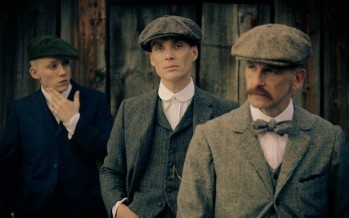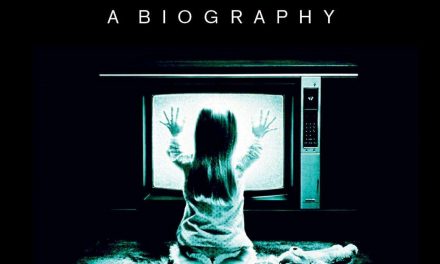Television scholars of my generation tend to have a reflex towards medium specificity, a desire to establish what it was about television that made it television. That was useful in the days when we were trying to emerge from a range of disciplines which informed our work – sociology, drama, history and English for example as well as a nascent and equally trenchant film studies. But it’s also useful to be reminded of commonalities as I was at the recent conference, ‘Screenwriting, Text and Performance’ organised by the Screenwriting Research Network and held in London with the support of, among others, the Institute of English Studies at University of London and the British Library.
The conference attracted an impressive number of international delegates and while the main emphasis was on the feature film there were also papers on everything from the expected (videogames, documentary, animation, television formats) to the more surprising (opera libretto, poetry, the theatricality of everyday life). And perhaps because of the shift away from the director to the screen writer, the way seemed to be opened to consider the contributions of others in the creative team so there were papers on the role of editors, producers, actors, script editors. One example of this was the paper by Eva Novrup Redvall and Iben Albinus Sabroe on ‘Production design as a storytelling tool in the writing of Danish TV drama series The Legacy’. They told of how the Danish National Film School is aiming to include production design into its training on the development and writing of a story. They spoke of the collaboration on Arvingerne/A Legacy (2014-) of the head writer Maya Ilsoe and production designer Mia Stensgaard. In particular, they spoke of the crucial role of Stensgaard in creating the artistic work of the fictional Veronika Grønnegaard, the world-famous artist (and highly problematic mother) on whom the series depended. Stensgaard created not only the studio and works of art as seen on screen but also the backstory of her artistic development. It was the decision to make her an artist whose work often looked unfinished and open to re-making which carried the storyline of the second series in which Gro, her daughter, ‘discovers’ new works even after Veronika’s death.

Another set of connections and collaborations was provided by the interview with Sir Ronald Harwood which was sponsored by the British Library to publicise the archive material they hold which covers writing for film, theatre and television. Harwood’s most well-known crossovers are between theatre and film but very early in his career he was writing across a range of media. He came to London in 1951 from South Africa at the age of 17. After training at RADA and working in theatre (most famously as Sir Donald Wolfit’s dresser), he turned to writing to make a living. In the early 60s a series of first appearances starts with a television play:
1960 First tv play The Barber of Stamford Hill
1961 first novel All the Same Shadows
1962 first screenplays for film from his TV work The Barber of Stamford Hill and Private Potter
1964 first produced stage play, March Hares (Liverpool)
1965 a screenplay credit on a major film, A High Wind in Jamaica (Alexander McKendrick, 20th century Fox)
Speaking at the conference, Harwood clearly indicated that, for a writer looking to make a living, television was definitely worthwhile. His entry into television came via theatre through his connections with Binkie Beaumont at the theatrical agency H M Tennents. Many of the actors who featured in his television plays came via that through route too and it’s salutary to remember that Sir Laurence Olivier took a starring role in ITV’s opening night. Harwood had a contract to write two plays a year for ATV. Some of these scripts can be found in the BL archive (including a 1960 script for The Lads, set in a British army base in the Mediterranean). Harwood has commented in a BAFTA lecture that
My generation of playwrights began, for the most part, on television. [As] extraordinary as it may now seem there were three weekly slots for the one off, hour long television play provided by the BBC and the independent television companies ATV and ABC. In those days television drama owed its allegiance to the theatre.
We were allowed to write moderately long dialogue scenes, and were obliged to contain the action in as few sets or locations as possible. In the beginning the transmissions went out live. It was all rather exciting, not to say hair-raising, very like the first night of a play in the theatre.
Harwood remarked at the British Library event that, unlike some of his contemporaries, he did not make his name in television. In part this may be because he felt he lacked what he called ‘the intimate knowledge of the English class system’ which would have given him the confidence to write about it as British writers did. Nevertheless, it maybe that he underplays his television work. He did after all go on to write 11 episodes of Roald Dahl’s Tales of the Unexpected (Anglia 1979 – 1981) and later on wrote what look like drama/documentaries, Breakthrough at Rkkyavik (1985, Sarah Harding) and Mandela (1987, Phillip Saville). But the big successes of his career were to be in cinema and theatre.
In a short time, Harwood’s credit will be returning to television with an adaptation of The Dresser. The Dresser was Harwood’s first big theatrical hit and continues to play around the world. It was first performed in 1980 and the story centres on an aging and solipsistic actor-manager, taking Shakespeare on a provincial tour, who is cajoled and bullied into his final performance by his dresser. The play became an equally big cinema hit in 1983 when it was filmed by Peter Yates for Columbia with Albert Finney as ‘Sir’ and Tom Courtney as Norman, the dresser. Harwood adapted his own play and retains the theatricality of the setting, performances and theme. While the film (and play) mocks the pretensions of old styles of acting and theatrical stardom, the film, through Finney’s brilliant performance, allows us to see that the theatre is offering an experience to its audience which should be valued. Although Finney considered himself too young for the part, his performance presents not only the aging actor’s varying moods but also a moving sense of what his younger self might have been like and an appreciation of how Shakespeare’s words have burrowed their way into his character. Adaptations of plays are often criticised for being bound by the theatrical conventions of their origins but here Harwood and Yates convey the value of theatre via cinema to the benefit of both.
.png)
The Dresser is currently being made into a television film, to be shown on BBC Two in late 2015. Richard Eyre directs Anthony Hopkins as Sir and Ian McKellen as Norman. It would be easy to criticise this as an attempt by the BBC to dust down its public service credentials by providing middle-brow plays for the mass audience; it has recently screened a version of Priestly’s An Inspector Calls. There is some truth in this given BBC Director General Tony Hall’s commitment to putting ‘the arts centre stage at the BBC’ earlier this year.

Nevertheless a new version of The Dresser could offer a fascinating opportunity to see how television approaches ‘the arts’ and compare how a piece crosses the boundaries of medium specificities. While Harwood himself, when adapting his own works for cinema, talks about the need to abandon the play, this version will apparently revert to Harwood’s playscript. So will this be Eyre’s reverential record of the play or a reworking of the play for television while preserving and re-presenting its theatricality as Harwood had done in 1983? And what kind of theatre will the television version work with? While Wolfit’s acting style was (just about) available in the popular memory of theatre in the 1980s, it is long gone now so the television version can’t just replicate the fond and faintly dismissive approach which Harwood challenged in his play. Can McKellen resist the temptation to entirely camp Norman up? And will Hopkins’ status as a star still be there to reinforce the role as Finney’s did at a rather different age in the film version? Whatever happens, though, Harwood’s career and various versions of The Dresser offers a useful reminder that early intertwining of theatre and television still has its effects today.
Christine Geraghty is an Honorary Professorial Fellow at the University of Glasgow. Her publications on television include a contribution to the 1981 BFI monograph on Coronation Street; Women and Soap Opera (Polity, 1991); and My Beautiful Laundrette (I B Taurus, 2004). Her BFR TV Classic on Bleak House was published in 2012 and her reflections on the beginning of her work on soap opera appears in ‘The BFI women and film study group 1976 – ?’, Renewing Feminisms, Radical Narratives, Fantasies and Futures in Media Studies H. Thornham and E. Weissmann (eds) I B Taurus 2013. She is on the editorial board of the Journal of British Cinema and Television and sits on the advisory boards of a number of journals, including Screen.





